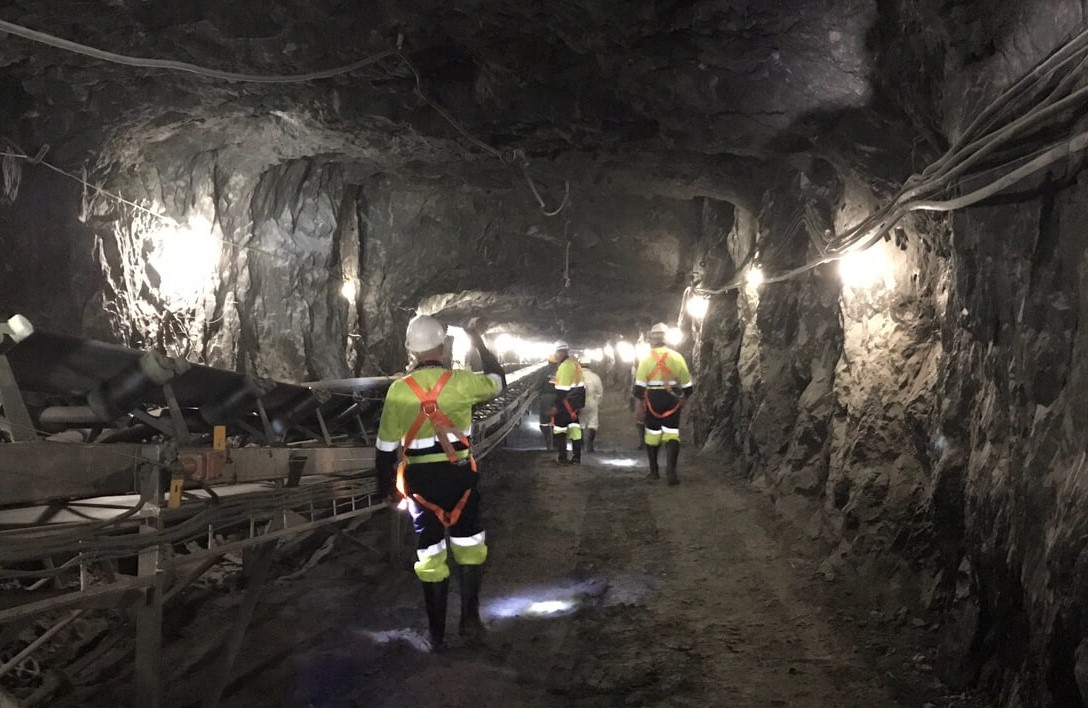Blanket’s gold output rises to 16 876oz in Q4 2019
Share

Harare (New Ziana) -United States based Caledonia Mining Corporation primary asset Blanket Mine produced a record 16 876 ounces in the fourth quarter ended December 31 2019, representing a 13 percent increase from 14 952 ounces in the comparative period backed by improved efficiencies.
In a trading update, chief executive officer Steve Curtis said on-mine costs per ounce declined to $651 in 2019 from $690 in 2018 owing to lower electricity costs in the first quarter and lower on-mine administration costs due to the devaluation of the local currency.
Despite continued substantial investment in the Central Shaft, the company said cash flows remain strong. Cash flows from operating activities increased 13 percent to US$23.9 million from US$21.1 million in 2018.
“This is largely on increased inventories (part of which relates to increased stocks of diesel to protect against interruptions to the electricity from the grid) and higher prepayments and lower payables which reflect the reduced availability of supplier credit in Zimbabwe due to the high level of inflation,” said Curtis.
Capital investment for the year remained unchanged at US$20 million.
Central Shaft is poised to be commissioned by year end after which production can begin to ramp up. Shaft sinking at Central Shaft was completed in July 2019 to the target depth of 1 204 meters.
Target output in 2021 is estimated at 75 000oz and 80 000oz in 2022.
“The shaft sinking phase of the project was completed in July 2019 and work has commenced on equipping the shaft; the substantial capital investment period is expected to be completed in the third quarter of 2020,” Curtis said, adding costs per ounce were expected to fall after Central Shaft was commissioned.
Curtis said the operating environment in the country had improved.
“Although the country continues to face challenges, the introduction of the interbank rate early in 2019 allowed us to better protect our workers from the effects of high inflation,” he said.
Interruptions to the supply of electricity from the grid which were experienced in the half year, he said, had largely been addressed following the conclusion of an agreement whereby Blanket and other gold producers purchase power which is imported into the country.
“This power is cheaper than under the previous arrangements prior to the devaluation of the Zimbabwe currency and Blanket can manage the reduced incidence of power interruptions using its increased suite of diesel generators.”
Apart from that, the miner is well-advanced in the evaluation of a solar project to provide some of Blanket’s power supply and reduce its dependence on imported power during daylight hours.
Revenue went up 11 percent to US$75.82 million from US$68.39 million in 2018.
After tax profit increased three fold to US$50.4 million from US$13.75 million in 2018 backed by a net foreign exchange gain of about US$30 million.
“This gain, which is largely unrealized, was due to the sharp devaluation of the Zimbabwe currency from February 2019 onwards, which reduced the US dollar values of bank loans and the deferred tax liability. If exchange rates remain unchanged, these unrealized losses will be realized from 2021 onwards as the deferred tax liability begins to unwind and the term loans begin to fall due for payment,” said Curtis.
This year gold production is expected to range from 53 000oz to 56 000oz.
New Ziana







